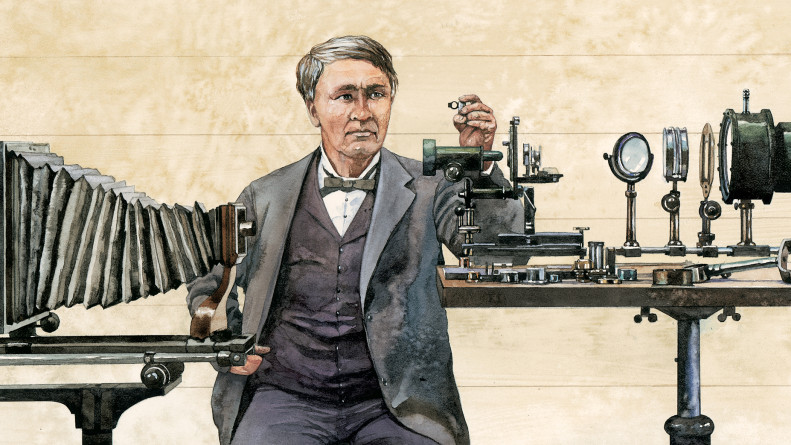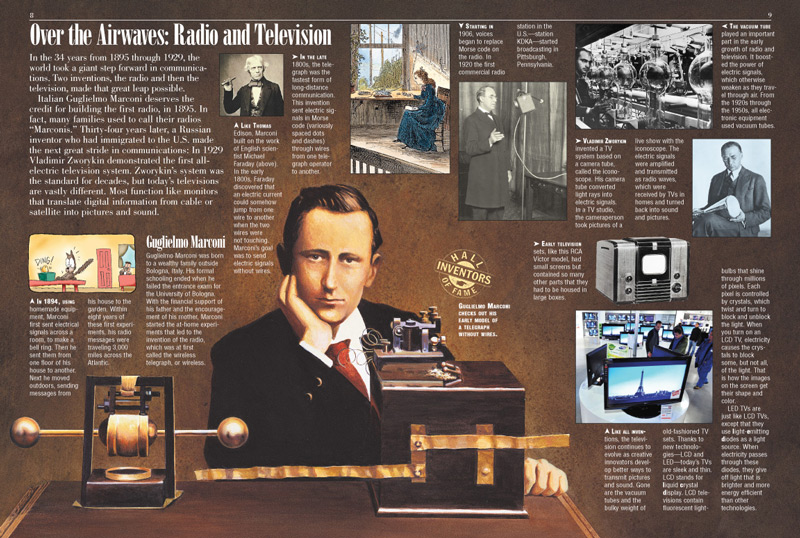Cross-Curricular Activities to Teach About Inventions
- January 17, 2018
- By KIDS DISCOVER
Have students try these activities to expand their knowledge and interest in Inventions.
Geography, Science, Language Arts, Art
 Have students select five inventions based around a theme, such as transportation or music, and find out who invented them. Ask students to research the cities where each of the inventors was born or created the invention. Have students plan a route to visit these five cities and design a travel brochure that advertises the “tour.” Students’ brochures should include illustrations of the inventions or city sites, details about each city’s connec- tion to the theme, and other sites that can be visited in each city. Bring in brochures from a local travel agency as samples.
Have students select five inventions based around a theme, such as transportation or music, and find out who invented them. Ask students to research the cities where each of the inventors was born or created the invention. Have students plan a route to visit these five cities and design a travel brochure that advertises the “tour.” Students’ brochures should include illustrations of the inventions or city sites, details about each city’s connec- tion to the theme, and other sites that can be visited in each city. Bring in brochures from a local travel agency as samples.
Science, History
Have students make a time line of some of the inventions in this unit. Each student can choose up to ten inventions to include on his or her time line. Students should write a short paragraph about each invention, telling who invented it and a few details about it, and include a few illustrations. Post the time lines on a bulletin board so students can compare them and note which inventions were included on most time lines.
Science, Social Studies, Language Arts
 Have students work in groups to put together a “magazine” of famous inventions of their choosing, other than the ones highlighted in this unit. Each student can focus on one invention and create one page spread for the magazine. The choices can be made around a theme (inventions in medicine, for example) or because students feel the inventions are important ones. Students should find out who the inventor was, when the invention came about, and how it changed people’s lives.
Have students work in groups to put together a “magazine” of famous inventions of their choosing, other than the ones highlighted in this unit. Each student can focus on one invention and create one page spread for the magazine. The choices can be made around a theme (inventions in medicine, for example) or because students feel the inventions are important ones. Students should find out who the inventor was, when the invention came about, and how it changed people’s lives.
Students can use a page spread of a Kids Discover Print Title as a sample to help them lay out their own pages, which should include a main body text, pictures that students have drawn of the invention and/or inventor, and informative captions. Encourage students to include a cover and table of contents in their magazine.
Language Arts, Art
Using the word inventor, students should think of one word for each letter that suggests something about inventors or a specific inventor. For example, the “i” might be “ingenuity.” Students should make their work visually appealing by including illustrations. Display the finished products on a bulletin board and discuss the variety of words you can use to describe inventors.
Science, History
Ask students to name as many inventions as they can while you write them on the board. Students can then play a game of 20 Questions with the inventions. One student secretly selects an invention from the list and other students may only ask questions that can be answered with a “yes” or “no” to try to guess the invention. Students can play as a whole class, in small groups, or with partners.